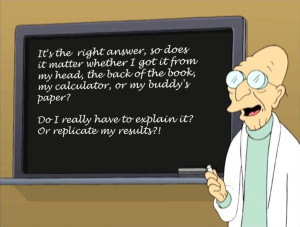 Here are some interesting articles on arithmetic algorithms.
Here are some interesting articles on arithmetic algorithms.
I’ve always been intrigued by those who argue for some sort of golden algorithm. For example, the best, and only way to multiply two digits by two digits is to start with a leading zero on the second line of multiplication.
These algorithms didn’t spring from Zeus’ head fully formed. My elementary teachers were taught to leave a space where I put that leading zero. Then that became an X, then by the time I was in 4th grade, we used a placeholder zero.
Each method has its pros and cons. There are mathematical reasons for objecting to each of those.
So when your student wants to use lattice multiplication, that’s cool. If he does that intriguing intersecting line thing that’s on YouTube, good for him. I can never remember how to work it, but good for him.
I overheard middle school teachers discussing some of the methods for addition that help build concepts. One of them said, “They should show that to the kids so they’ve seen it and maybe will understand it, but then they need to teach them the regular way.”
Oh, is there a regular way!?
A non-math teacher chimed in at that point and said that if kids aren’t going to be math majors, no one should confuse them with anything other than the rote algorithms.
Yeah, if I start commenting on that, my brain will explode.
So instead, here is an article from the AIMS foundation that looks at different methods for arithmetic and discusses why we should teach more than one method! (Heresy! It will confuse them! Then they will mix them up and not learn any of them!) I like one of the methods and think I will adopt it for my struggling kiddos.
The article links to another which delves into the notion of the value of right answers vs. the value of sound reasoning and quality communication.
